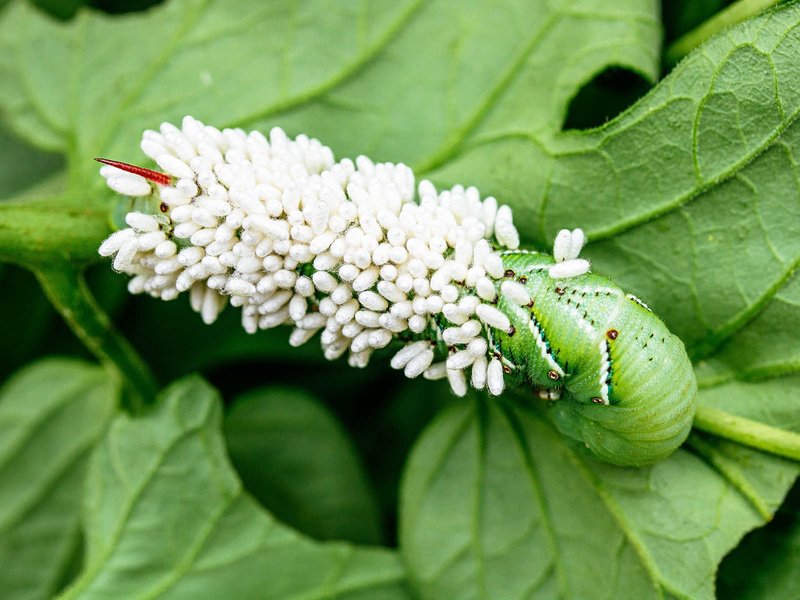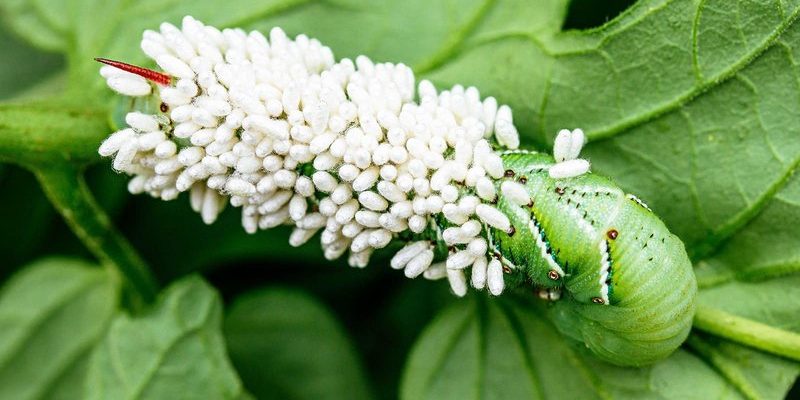
Imagine your garden is like a stage, and the birds are the stars of the show. By creating an inviting environment, you can encourage them to perform their best act: hunting down those hornworms. We’ll explore various strategies to attract these birds, from planting the right types of flowers to providing comfortable perches. The more appealing your garden is to birds, the better your chances of keeping those pesky hornworms at bay.
Understanding the Role of Birds in Pest Control
Birds are nature’s little pest managers. They play a critical role in maintaining the balance of ecosystems by controlling insect populations. Many birds, like bluebirds, chickadees, and wrens, are known to feast on hornworms. When these birds visit your garden, they can help reduce the hornworm population without the need for chemical pesticides.
Here’s the thing: hornworms are not only a nuisance; they can also severely damage your plants. By attracting birds that prey on hornworms, you’re employing a natural solution that benefits both your garden and the environment. Think of it as forming a partnership with nature. You provide a welcoming space, and in return, the birds help keep your plants healthy and thriving.
So, how do you ensure that these birds feel at home in your yard? It starts with understanding their needs. Birds are looking for food, water, and shelter. If you can provide these essentials, you’ll be well on your way to establishing a bird-friendly garden.
Plant Bird-Friendly Flowers
One of the most effective ways to attract birds is by planting a variety of flowers. Birds are drawn to gardens that offer not only nectar-rich blooms but also seeds and insects. Here’s a list of some wonderful flowers to consider:
- Sunflowers: These are not just beautiful; they also produce seeds that many birds love.
- Coneflowers: Known for their durability, coneflowers attract bees and other insects that birds feed on.
- Lantana: Another favorite for attracting hummingbirds, lantana produces vibrant flowers and fruits.
- Black-eyed Susans: These provide seeds for birds in the fall and are stunning to look at.
When choosing flowers, consider native plants that fit your climate. Native species are more likely to attract local birds since they’re part of their natural habitat. Plus, these plants generally require less maintenance!
Provide Fresh Water Sources
Water is essential for all living creatures, including birds. By adding a water source to your garden, such as a birdbath, you’ll make your space even more inviting. Birds need water for drinking and bathing, and a clean source can be the key to attracting them.
Here’s how to set up a birdbath:
1. Choose the Right Location: Place your birdbath in a quiet area that’s easily visible from a window. A shady spot can help keep the water cool.
2. Keep It Clean: Change the water every few days to prevent algae growth and ensure it stays fresh.
3. Add Texture: Consider adding some rocks or pebbles to the bottom. This provides birds with a place to perch and makes it easier for smaller species to access the water.
By providing a reliable water source, you’ll not only attract your feathered friends but also support them during hot summer months.
Build Nesting Areas
Creating nesting sites is crucial for attracting birds that prey on hornworms. Birds are more likely to stick around if they feel they have a safe place to raise their young. You can encourage nesting through a few simple strategies:
– Install Nest Boxes: Different bird species prefer different types of nest boxes. Research which birds are common in your area and choose a suitable box design. For example, bluebirds love open fields and benefit from specific box dimensions.
– Plant Shrubs and Small Trees: Dense shrubs and trees can provide natural nesting spots. Opt for native varieties that offer shelter while also attracting insects, giving birds a food source.
– Leave Some Brush: If you have a corner of your yard that can become a natural brush pile, leave it be! Many birds appreciate this habitat for nesting and hiding from predators.
By creating safe nesting areas, you’re encouraging birds to visit and potentially stay. This isn’t just good for the birds; it’s great for your garden too!
Reduce Pesticide Use
If you want to attract birds that prey on hornworms, it’s essential to limit pesticide use in your garden. Chemicals can harm birds and their prey, leading to a decrease in visitors. Instead of reaching for those toxic sprays, consider these alternatives:
– Hand-Picking: Regularly inspect your plants for hornworms and remove them manually. It might seem tedious, but it’s an effective way to manage the problem.
– Natural Predators: Encourage other beneficial insects, like ladybugs and lacewings, that can help control pest populations.
– Organic Solutions: Use organic pest control methods, like neem oil or insecticidal soap, which are less harmful to birds.
By reducing pesticides, you’re not just protecting birds; you’re also creating a healthier environment for your plants and your family.
Creating Perches and Shelters
Birds need safe places to perch and rest. If your garden is too bare, they may not feel secure enough to visit. By providing perches and shelters, you create a welcoming environment. Here are some ways to do this:
– Plant Tall Plants: Tall flowers and grasses provide natural perches for birds. They can land safely and scout for food nearby.
– Install Bird Feeders: If you want to attract birds, consider adding feeders stocked with seeds. Platform feeders can also double as perches.
– Branch Piles: Leaving a few fallen branches in your garden can create a natural shelter for smaller birds.
Remember, the more comfortable birds feel in your garden, the more likely they’ll stick around to help keep those hornworm populations in check.
Final Thoughts on Attracting Birds
Attracting birds that prey on hornworms is not just a practical solution for your garden; it’s also a delightful way to connect with nature. By providing food, water, shelter, and a garden environment free from harmful chemicals, you can create a sanctuary for these helpful birds. It’s like forming a little community where everyone benefits!
So, whether you’re planting native flowers, installing birdbaths, or simply being more mindful about the chemicals you use, every small step counts. Embrace the beauty of nature and enjoy the benefits of a bird-friendly garden. With patience and care, you’ll soon find your garden buzzing with bird activity—and fewer hornworms munching on your plants!

